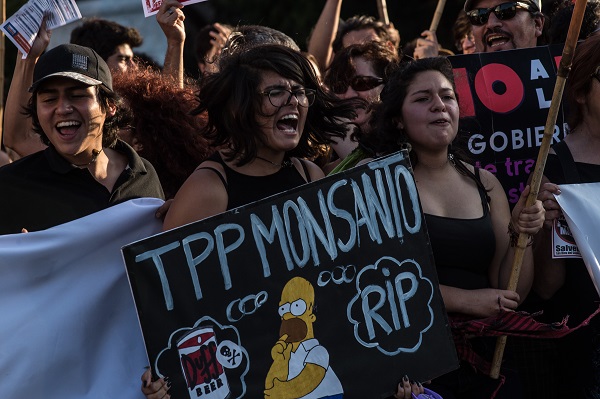Santiago, Chileans have turned on the pharmaceutical industry since the protests over social justice broke out in October, reacting to shortages of medicines and the high prices charged by private pharmacies, which sell brand-name medications at the highest prices in Latin America.
In the evenings, images captured by security cameras at pharmacies show groups of hooded men stealing boxes of medicines from shelves, while health-care professionals, retirees and young people protest in the afternoons, holding up signs calling for lower medicine prices, Efe news reported.
One of the main complaints from citizens about pharmacies is that their profits do not yield benefits for consumers, while a report released by the National Economic Prosecutor’s Office (FNE) concluded that pharmacies posted total sales of $1.51 billion in 2018.
Chileans, according to the Pan American Health Organization (PAHO), have the highest out-of-pocket expenses for medicines and are the Latin American consumers who spend the most on brand-name drugs.
An October 2019 Chilean National Consumer Service (SERNAC) study found a difference of up to 181,000 pesos (about $232) between the prices of brand-name drugs and generics.
For example, in the case of a medicine containing Atorvastatin, which is used to treat high cholesterol, a 30-pill supply (20 mg) of the brand-name drug Lipitor costs 54,590 pesos (about $70), while a consumer could buy up to 29 boxes of the generic equivalent, which goes for 1,880 pesos ($2.40).
The Chilean public health service, which is used by more than 75 percent of the people, has a system for providing drugs to public pharmacies and hospitals.
The public health service offers drugs at lower prices and even provides some medications at no charge to those over 60 and the poor.
The lack of inventory, however, and long waiting times at crowded public pharmacies have caused people to get fed up with the system.
The public health service’s medicine supply system features a program called the GES, which determines which drugs are available at public pharmacies.
Under the current system, according to the FNE report on the pharmaceutical industry, “the existing regulations do not ensure or guarantee access to these medicines.”
Pharmacists Association vice president Jose Cienfuegos told EFE that demand for medicines for basic illnesses could sometimes not be met, adding that “CENABAST (the agency that provides drugs to the public sector) is not fulfilling 100 percent of the supply.”
Mariela Maturana, a 57-year-old unemployed woman, said she could not work due to fibromyalgia and spent more than 150,000 pesos (about $190) per month on medications. This disease is not covered by the GES and, therefore, the price of all treatments must be paid by the patient.
Despite the public options for buying drugs, the system’s deficiencies force 48 percent of Chileans to buy medicines from private pharmacy chains, which sell products at substantially higher prices.
Chile’s three largest pharmacy chains – Cruz Verde, Salcobrand and FASA – were convicted in 2008 of colluding to set the prices of more than 222 medicines and were targeted during the protests, with some stores being burned and looted.
The FNE said in its report that private pharmacy chains pay 70 percent more to pharmaceutical companies for drugs than the public sector, a figure that has shifted the focus of the debate to profit margins.
The figures on drug costs, moreover, could explain the high prices at private pharmacies, compared to public ones.
Juan Pablo Atal, an academic who studies health-care economics, discussed drug pricing with EFE.
“It seems that the pharmaceutical companies take a big chunk because they sell at much higher prices to pharmacies than to the government. This shows where the money is,” Atal said.
The pharmaceutical companies, which according to the FNE spend more than $200 million annually promoting their products among doctors, have created a brand culture that has resulted in 90 percent of the public being prescribed branded drugs instead of cheaper generics.
Sebastian Castro, an attorney with the National Economic Prosecutor’s Office, said it wa doctors who drive demand for brand-name drugs by prescribing such medicines to patients.
“Some 42 per cent of doctors get information on medications from sales reps and at conferences, mostly financed by pharmaceutical companies,” Castro said.
The marketing system for drugs, controlled by pharmaceutical companies and supported by some doctors, and the inefficiency of the public health system caused the spike in medicine prices that has resulted in protests against the industry.
CENABAST chairman Valentin Diaz told EFE that “the state has not been sufficiently assertive in intervening in the market and people, in turn, have been left helpless in the face of the power of the pharmaceutical industry.”









